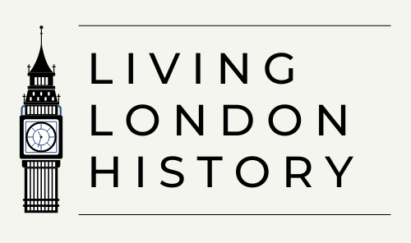The Museum of London is a must for any fan of London history. It opened at its present site in 1976 and has artefacts from prehistoric London right up until modern day.

The museum is moving to the historic Smithfield site, due to open in 2025, with the current site closing in December 2022.
Here are my eight top historical highlights to look out for.
1. An Auroch Skull

Upon entering the first section of the museum, ‘London before London’, you will be presented with this almighty beast. It is the skull of an auroch, found in Ilford in Essex.
Aurochs were already extinct in Britain when the Romans invaded in 55BC but herds of these creatures would have once roamed around the landscape that today we call London. This skull is one of the largest ever found and dates from 245-186BC.
2. The Bucklersbury Roman Mosiac

The highlight of the Roman London section for me was the stunning Bucklersbury Mosaic. This beautiful mosaic floor was found in 1869 on Bucklersbury, a street in the heart of the City.
Dating from around 300AD it would have been the floor of the ‘triclinium’ or dining room in a desirable Roman property. This room would have been the largest in the house and used for entertaining and hosting.
3. The Model Of Medieval St Paul’s Cathedral

Ok this one is not an actual historical artefact but I still think it’s great. It is a model of the medieval St Paul’s Cathedral.
This gothic giant was on the site of the current St Paul’s until 1666 when it burnt down in the Great Fire of London. The medieval St Paul’s was one of the largest churches in the world and, at 489 feet, had potentially the tallest spire in the world. For comparison, today’s St Paul’s Cathedral measures 364 feet in height.
4. Samuel Pepys’ Plate

In 2019 the Museum of London obtained this extremely rare plate that belonged to the famous 17th century diarist and naval administrator Samuel Pepys. It is a silver trencher and only one of three surviving silver items known to have belonged to Pepys, the other two are in US. It dates from 1681/2 and displays Pepys’ coat of arms.
In his diary he often boasted about serving his guests on silver plates instead of pewter and this one is complete with the scratch marks from knives and forks.
5. Ann Fanshawe’s Dress

This spectacular dress with the extraordinarily wide hips is thought to date from 1752. It was made for Ann Fanshawe whose father, Crisp Gascoyne, had just been made Lord Mayor of London. As her mother was not alive, Ann assumed the role of Lady Mayoress and is thought to have worn this dress only once; on the day of the inauguration.
It was made by the Huguenot silk-weavers of Spitalfields and is incredibly finely detailed . It would likely have been uniquely designed and made for Ann.
6. The Wellclose Prison Cell and Graffiti

This was probably my favourite item in the museum: a prison cell, dating from the mid 1700’s, from Wellclose Prison. The prison was located off Wellclose Square near the Tower of London and was located beneath the Neptune Public House. It was run privately so generally held insolvent debtors.

Amazingly the walls are covered in graffiti from people that were incarcerated there over the years. It is astonishing and quite moving actually to have that direct connection to people of the past.


The prison was dismantled in 1911 and the Museum of London acquired two of the cells.
7. A Prison Door From Newgate Prison

If one sinister prison relic was not enough, they also have an old door from the notorious Newgate Prison. There have been many Newgate prisons over the years with the original burning down in the Great Fire in 1666.
This sturdy looking door dates from 1782 when the prison was reconstructed following its destruction during the Gordon Riots of 1780. The door is thought to have led into one of the inner yards of the prison. That prison lasted until 1902 when it was pulled down and the Old Bailey built on the site.
8. A 1920’s Selfridges Lift

This beautifully ornate, art nouveau lift was one of many installed in Selfridges in 1928. The lift was designed by Edgar William Brandt to be in keeping with the glitz and glamour of the rest of the store.

Selfridges initially employed women to operate the lifts but after World War II they were operated by disabled ex-servicemen. The lifts were removed in a refurbishment from 1970-72.
Visiting The Museum
Those are my top eight but there is so much more to see at the museum! It is open from 10am-5pm everyday of the week with last entry at 4.30pm. It is free of charge but a donation is encouraged to help support the site.
Find out more on their website here.
More of London’s history below…
Visiting The Site Of One Of Victorian London’s Worst Slums
Skimming over the East End of London on Google maps (or your maps provider of…
An Inspiring Community Campaign: The East London Waterworks Park
I have written a lot since starting this blog about many of the amazing green…
Celebrating 60 Years Of The London Ambulance Service
2025 marks the 60th anniversary of one of London’s most essential services: the London Ambulance…
What Are The Odd Red Pillars By Blackfriars Bridge?
If you have ever walked over Blackfriars Bridge you may well have spotted these odd…






I want to see all those artefacts.